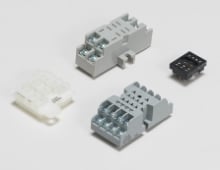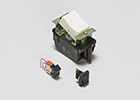Our types of switching devices include contactors, relays, and circuit breakers that offer cost-effective, reliable performance to enhance productivity. Our products are optimally engineered to withstand extreme shock, vibration, temperature, and altitude.
Functions of Relays
- Galvanic separation of the primary or actuating circuit and load circuits
- Single-input/multiple-output capability
- Separation of different load circuits for multi-pole relays
- Separation of AC and DC circuits
- Interface between electronic and power circuits
- Multiple switching operations – time delay, signal condition, among others
Our switching devices are designed and manufactured to be used in harsh environments anywhere — in production lines, robotics, lifts, control panels, cash machines, motion control systems, lighting, building systems, solar, HVAC, aerospace technology, cars, trucks, buses, and an array of safety-critical applications.
As a global relay manufacturer with a portfolio that features industrial relays and automotive relays, we offer solutions from our industry-recognized brands, including AGASTAT, ALCOSWITCH, AMP, and Axicom, as well as CII, DRI Relays (DRI), HARTMAN, KILOVAC, KISSLING, OEG, Potter and Brumfield, and SCHRACK.
How Relays Work
Relays have the same subsystems and principles of operation regardless of whether these are electromechanical relays or electronic relays or designed to switch signal or high-power loads. Relays convert an electrical input signal on the primary side to an intermediate and non-electric physical signal. These devices also reconvert the non-electric physical signal to operate a switching element (secondary side) such as contacts which switch and conduct electrical current (i.e., output, load current). Relays use the non-electric signal between the primary and secondary side to provide the necessary galvanic separation between the input and output circuits. Relays enable a single output that can activate multiple circuits and functions, which helps increase cost savings because high current capacity switches cost more than lower current versions. Relays can also perform logic functions on certain inputs, such as latching an output on and off from a momentary input. When a switch cannot take a high current or is operated by electronic circuit, the relay can be operated by switch circuits. Arcing combined with contact bouncing is one of the parameters that limits inrush current. Care has to be taken during the design and testing phase of an application so that the peak inrush current will not exceed the relay specification, you need a high inrush relay when you need to address inrush currents that can be extremely high.










 e
e

 e
e

